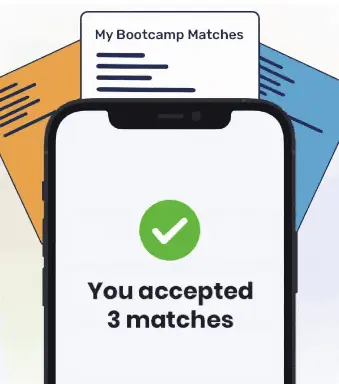It is possible to find artistic jobs that don’t require a degree in this day and age. Many of these positions focus more on skills and creative projects than on education. If you have the proper training, you don’t need to spend time and money on a costly degree just to pursue creative career paths. In some cases, you can get a creative job that pays well with a GED and not much else.
While some of the creative jobs without a degree requirement are entry-level, with the right combination of skills and experience, you can eventually learn more as the job progresses—potentially leading to working for yourself as a freelancer or creating your own business. Read on to learn everything you need to know about creative jobs that don’t require a degree.
What Are Creative Jobs?
Creative jobs focus on developing, expressing, and creating original concepts. Creative jobs are vast and encompass careers like fashion designer, artist, performer, and freelance writer. Even without a degree, creative jobs can be yours if you have a relevant skillset that you can demonstrate to your prospective employer on your resume and in interviews.
Creative thinkers don’t have to live the life of a starving artist if they don’t want to be. According to the National Endowment for the Arts and U.S. Bureau of Economic Analysis, the arts and culture production industry contributed $1.2 trillion to the U.S. economy in 2023.1
Top Creative Jobs Without a Bachelor’s Degree Requirement
Please note, all salary and job details have been updated as of August 2025. All information is subject to change.
| Job | Average Salary | Outlook |
| Art Director | $111,0402 | 5% |
| Special Effects Artist | $99,8003 | 4% |
| Web Developer | $95,3804 | 8% |
| Industrial Designer | $79,4505 | 3% |
| Landscape Architect | $79,6606 | 5% |
| Writer | $72,2707 | 5% |
| Editor | $75,2608 | -2% |
| Video Editor | $70,5709 | 3% |
| Graphic Designer | $61,30010 | 2% |
| Photographer | $42,52011 | 4% |
Best Creative Jobs That Don’t Require a Degree: A Closer Look

Creative jobs make a great career option for job seekers who are naturally creative and want to be responsible for creating beautiful products, spaces, materials, and more. Some of these jobs are creative jobs that don’t require a degree, making them highly accessible to all types of career seekers. Below are some examples of creative jobs without a degree requirement.
Art Director
An art director oversees television, movie, and magazine visual images and layout styles. It is their job to establish the overall look of the campaign. As a part of their job, art directors will need to decide on all graphics and approve all final designs.
Different industries might require other art directors to do additional tasks. For example, some employers may need directors to prepare budgets and make schedules for the various campaigns. Directors may also be in charge of the overall website design and layout.
Special Effects Artist
Special effects artists create visual effects for a variety of media. These moving images are created with a computer graphics program like Blender. Despite being computer-aided design, the effects are not always three-dimensional. Many effects are two-dimensional.
Special effects artists must also take direction well. Listening to the director and writers and understanding what they want is essential. They must also work well under pressure in order to meet deadlines.
Web Developer
Web developers use programming languages to code web applications and websites. It is their responsibility to write both the front and backend code based on the client’s design. In addition, web developers test their code to ensure everything is working before submission.
Freelance website developers may turn over the finished product without the promise of ongoing maintenance. However, doing routine audits and performing maintenance on an as-needed basis may be part of the job. A freelance web developer’s salary is primarily determined by the strength of a portfolio, which is why it’s possible to land this creative job without a degree.
Industrial Designer
Industrial designers help to develop concepts for items people use daily. Some of the everyday things are cars, electronics, and toys. An industrial designer must combine a mastery of engineering and art with an understanding of business.
Industrial designers work with product experts, marketing specialists, and engineers to design products. They frequently use computer-aided design software, such as AutoCAD, to help bring the designs to life and make changes before production.
Landscape Architect
Landscape architects design outdoor spaces such as gardens, parks, and golf courses. They can work with public and private spaces to create a beautiful, welcoming environment. It is their job to plan the site and make a landscape design.
Part of the landscape architect’s job is to design an aesthetically pleasing outdoor space. They work with clients to determine their vision and bring it to life. By gaining insight into what the area is used for and the general layout, landscape architects can meet the client’s needs.
Writer
Writers are responsible for creating written content. This includes books, newspapers, magazines, and television scripts. Written content also includes all online content, such as blogs and product descriptions, and the documentation associated with a product.
There are several different types of professional writers. For example, a technical writer specializes in documentation and manuals for products. Copywriters specialize in marketing material. In contrast, journalists focus on news and local interest stories for newspapers and magazines.
Editor
Editors evaluate written material before publication. They check for grammatical errors and other issues. It is part of their job to select which content to publish, either for an online or for a print outlet. Editors often hand out assignments to a pool of professional writers. Once finished, they give their writers feedback to improve their written work before publication.
Video Editor
Video editors use images and sound to create a story. They are an essential part of the video production process, with most of their work coming during post-production. However, they do have tasks in pre-production, which include creating storyboards and assisting in script development.
Video editors must be able to follow the script to gain a better understanding of video requirements. They must also be able to work with directors and producers to determine the best video layouts and editing styles for their projects.
Graphic Designer
A graphic designer is someone who creates visual media for both physical and digital platforms. They work with clients to design social media posts, marketing advertisements, emails, newsletters, and even television commercials.
To become a graphic designer, one must have a creative spark and be able to turn given data into stunning visuals. They need to understand how to use digital illustration software. Designers are responsible for choosing colors, images, and fonts for each piece.
Photographer
Photographers capture images with their cameras. These images can express how the photographer feels or help tell a story. In addition, photographers can showcase their art through various media outlets.
To be a photographer, one must have creative skills. Understanding image manipulation software is a must to be able to edit files before publication. The photographer’s responsibility is to develop their images to the customer’s specifications, either digitally or physically.

"Career Karma entered my life when I needed it most and quickly helped me match with a bootcamp. Two months after graduating, I found my dream job that aligned with my values and goals in life!"
Venus, Software Engineer at Rockbot
What Skills Do You Need to Land Creative Careers?
The skills you need to land creative careers depend on your desired career path. For example, if you are leaning toward photography, knowledge of Adobe Photoshop, Lightroom, and other photo editing software would help you produce images that are both artistic and high-quality. However, there are also common skills you need to excel in creative careers, which include the following.
Interpersonal Skills
Interpersonal skills are the traits relied on when communicating and interacting with others. While this does include communication skills, there is far more to it than that. For example, it is essential to be dependable, responsible, motivated, and a good listener when pursuing a creative career or any career without a degree.
Artistic Skills
Most creative industries require some form of artistic skill. For example, web developers, graphic designers, landscape architects, and industrial designers must have an artistic eye. However, while going to art school might be helpful, it is often not required to gain an entry-level job. A web design bootcamp might be a better fit.
Writing Skills
Not all creative jobs require someone to be an artist. Sometimes businesses need someone who can paint a picture using words. Strong writing skills can help freelance writers land the job of their dreams. Additionally, strong writing skills can help other creatives tackle different facets of their career.
What Education Do You Need to Get a Creative Job?
It is possible to get a creative job without a bachelor’s degree. If you have the skills necessary for the chosen career and a portfolio that showcases your talent, some companies may choose to hire you. In most cases, it is possible to get a creative job with just a GED or a high school diploma.
However, even if a client or company is willing to hire without a formal degree, certain skills and certifications may still be required. Therefore, formal training in bootcamps or other online certifications will benefit you during your job hunt.
Why College Is Not for Everyone
You may have dreamed of going to college but found it’s just out of your reach. Like many, you find the tuition is too high, and it is only a small factor in the expenses you’ll pay. According to a study completed by the American Council on Education, other indirect costs, such as books, childcare, and housing, are elements that can put college out of reach.12
Regardless of cost, you might not be ready for the stress of a four-year college. Instead, vocational training or online courses are a better fit. Rather than pushing yourself, you can choose a different route to gain a foothold in a creative career without going to college first.
Can a Coding Bootcamp Help Me Get a Creative Job?
Yes, it’s possible that a coding bootcamp can help you land jobs in the creative field. For example, coding bootcamps that teach languages such as JavaScript and Python can help you explore employment in web design. Other graphic design bootcamps can lead to graphic artist jobs.
Unfortunately, not every creative career has a bootcamp available; however, there are still plenty of opportunities to learn and grow. For those creative careers that have bootcamps, you gain access to high-quality courses to learn the most popular tech skills.
How to Get a Creative Job With a GED
It may be challenging to get a creative job with a GED or a high school diploma. However, these credentials are a good start. Before fully unlocking the pathway to creative careers, you can use these qualifications to apply for part-time creative jobs. As more companies move toward skill-based hiring, use this opportunity to gain practical experience and boost your resume.
Take a GED Course
If you don’t already have your GED, you need to take a course to help prepare you for the exam. You’ll be tested in the four main areas of social studies, language arts, math, and science. Each subject has its test, and you may take them one at a time or all in one sitting.
Get Training in Common Skills
Every creative job has a skillset. To apply for a job, you need to ensure that you have those skills. Take training courses to learn new skills or polish the ones you have. It will make a difference when you apply.
Prepare Your Resume and Portfolio
A strong resume is necessary when you are applying for a new position. Many creative jobs need a technical resume instead of a traditional CV. Technical resume templates can help you focus on technical skills along with your work history. You also need a portfolio to show potential clients and employers what you can do.
Search the Job Boards
Once you have your resume and portfolio in hand, it’s time to put out applications. Job boards like LinkedIn and Indeed are great places to start. You may also look at freelance writing boards like Upwork and freelance arts boards like Design Crowd to find entry-level jobs. Each application should have a customized cover letter.
Practice Interview Skills
Even if you apply for a freelance post, solid interview skills are a must. So, you should first do some research on common interview questions. Then, get a friend or family member to go through some of them with you to practice.
What Do Creative Jobs Pay?
Pay for creative jobs can vary widely. However, there is a pay range depending on which creative industry you work in. As of August 2025, the median salary for a creative agent is $104,593.13 The higher-end annual salary is for an art director, who makes an average salary of $121,757.14 On the lower end, photographers have a median hourly rate of only $20/hour.15
With various job skills that fall under this umbrella, it isn’t easy to know precisely where a specific career falls on the salary curve for high-paying creative jobs. Creative personalities can work full-time for companies, while others choose to work freelance. There is no guarantee that one creative career path will offer better pay than another.
Where to Find Creative Jobs That Don’t Require a Degree
Indeed
Indeed is one of the largest job boards on the internet.16 Creative types can use the search engine to look for freelance or permanent jobs in their chosen field. In addition, users can narrow their search to their city or expand and find new locations to work.
LinkedIn is a professional job site that connects you with a network of people.17 Creative thinkers can exchange career information and connect to others in the creative industry. On LinkedIn, creative professionals can search for jobs and grow professionally.
Behance
Behance is a global creative platform by Adobe where designers, illustrators, and visual creators can showcase portfolios, explore curated full-time, freelance, and internship listings, and apply directly with visibility into project scope, budgets, and timelines.18 Pro features boost exposure and streamline connections with potential clients.
Dribbble
Dribbble is a portfolio and job-sharing platform where designers, illustrators, and creatives can showcase their work (“shots”), gain feedback, and explore curated full-time, freelance, and remote job listings.19 With community engagement and a Pro upgrade for job access, it’s ideal for building visibility and landing gigs without formal credentials.
Consider a Creative Degree Later in Your Career
You can always find entry-level creative jobs without a degree. You only require the skills and experience to show your clients or employers what you can do. Still, as you progress in your career, you might find that you’re missing out on promotions without a little extra knowledge. This is especially true if you are trying to land higher-level creative jobs with competitive pay.
Going to school later in your career could give you the edge you need to gain a higher position or learn new trends in the field. You might consider getting an associate’s degree in graphic design, for example, or simply take a bootcamp course. The fact of the matter is that you can land a high-paying creative job without a degree or with one. You just have to understand your goals.
Creative Jobs Without a Degree FAQ
No, freelance artists don’t need a degree. They need fantastic art skills, a solid portfolio, and the tenacity to keep at it. You will find that there are jobs for artists without degrees out there. As a freelancer with a strong set of skills, you can get hired for jobs simply by looking for clients regularly. Having good interpersonal skills makes a world of difference.
Entry-level web designers help code and design websites for their employers or freelance clients. Like a senior web designer, entry-level workers must have an advanced understanding of web development programming languages.
To become an art director, start by learning the skills you’ll need. Learning about layout and design is essential. You should also understand advertising and the differing needs of the various media platforms that may publish your work.
Yes, writing is a skill that requires practice and a solid portfolio, more than anything. Some writers get to practice and gain experience by writing for clients. Others take a writing class or get an apprenticeship.
Sources:
2 https://www.bls.gov/ooh/arts-and-design/art-directors.htm#tab-5
3 https://www.bls.gov/ooh/arts-and-design/multimedia-artists-and-animators.htm
4 https://www.bls.gov/ooh/computer-and-information-technology/web-developers.htm
5 https://www.bls.gov/ooh/arts-and-design/industrial-designers.htm
6 https://www.bls.gov/ooh/architecture-and-engineering/landscape-architects.htm
7 https://www.bls.gov/ooh/media-and-communication/writers-and-authors.htm
8 https://www.bls.gov/ooh/media-and-communication/editors.htm
9 https://www.bls.gov/ooh/media-and-communication/film-and-video-editors-and-camera-operators.htm
10 https://www.bls.gov/ooh/arts-and-design/graphic-designers.htm
11 https://www.bls.gov/ooh/media-and-communication/photographers.htm
12 https://www.acenet.edu/Documents/Quick-Hits-Indirect-Costs.pdf
13 https://www.ziprecruiter.com/Salaries/Creative-Agency-Salary
14 https://www.ziprecruiter.com/Salaries/Art-Director-Salary
15 https://www.ziprecruiter.com/Salaries/Photographer-Salary
About us: Career Karma is a platform designed to help job seekers find, research, and connect with job training programs to advance their careers. Learn about the CK publication.

